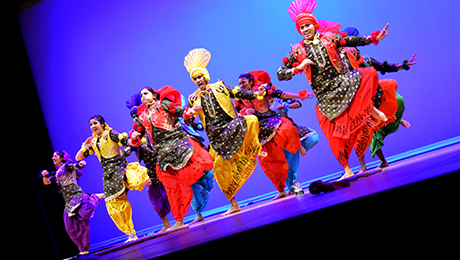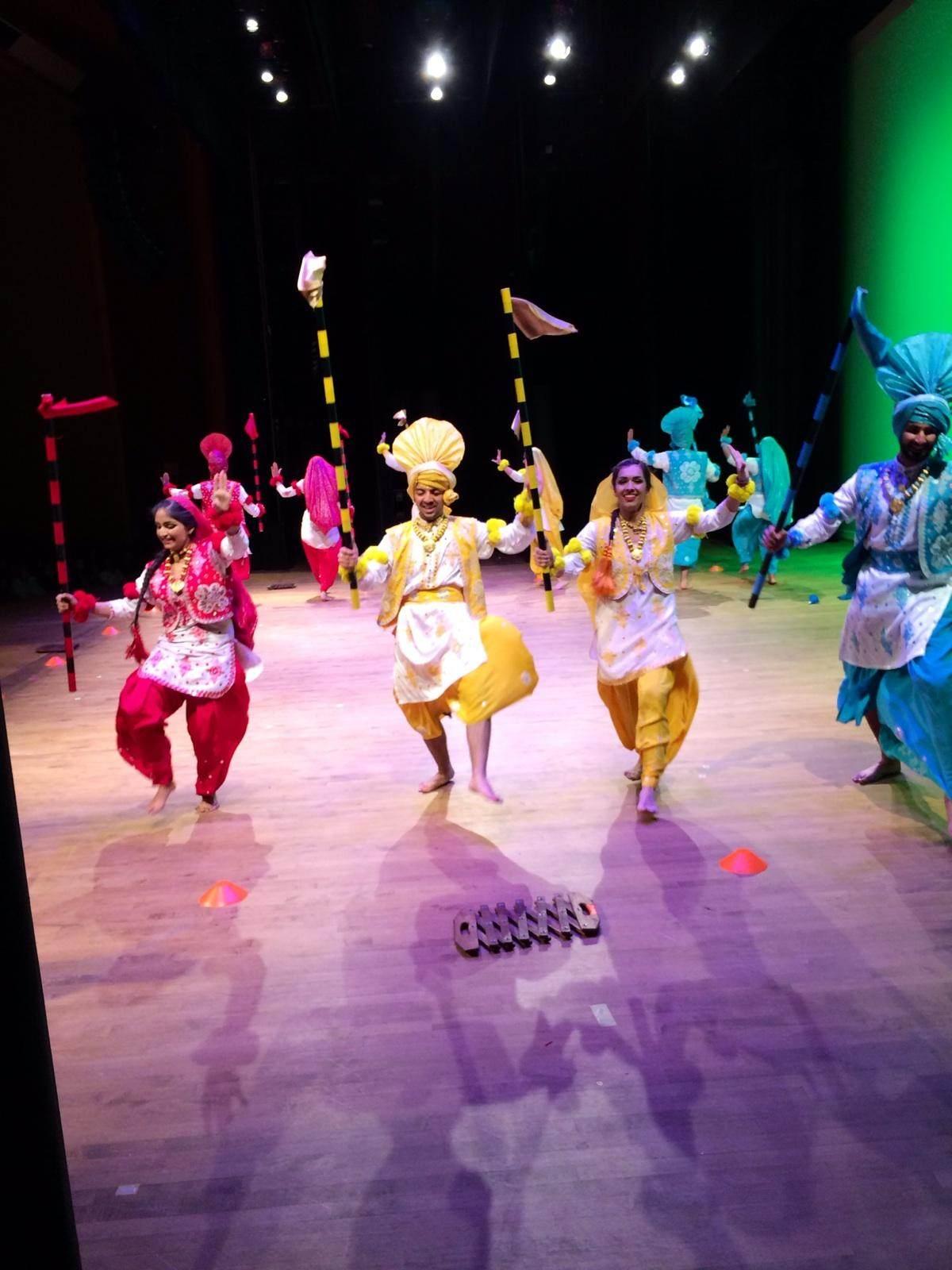By Nic Corbett
Some 170 performers from nine universities showed off their synchronized high-energy dance moves at the 21st annual Bhangra Blowout, held Saturday night in a sold-out Lisner Auditorium at the George Washington University.
The intercollegiate dance competition is organized every year by GW’s South Asian Society. GW Bhangra performed the exhibition act, opening the night to eight competing teams whose performances were judged by a five-person panel. The eight teams were selected out of 22 that applied to compete this year.
Ticket proceeds from Bhangra Blowout benefit the international nonprofit organization Room to Read, which works to increase literacy and gender equality in education around the world.
“We are known to be the longest running and the most prestigious intercollegiate dance competition,” said Ridhi Arora, president of the South Asian Society. “We have teams come from across the country.”
Bhangra is a traditional dance from the Punjab region of Southeast Asia that includes northern India. It is characterized by a choreographed routine of intense jumping, squatting and twirling. The dance is usually performed on April 13 or 14 for the Baisakhi Festival, which marks the start of the solar year, or the Sikh New Year, and celebrates the harvest.
“That’s the day when they cut the crops, and traditionally, they perform this dance,” said Neha Ahuja, who was in the audience of about 1,300 people. Originally from New Delhi, India, Ms. Ahuja came to the U.S. to work about three months ago. She said the performances were “very good.”
The dancers wore elaborate traditional costumes, draped with flowing fabrics covered in sequins and vests that some groups modified to include a symbol on the back to represent their university.
The teams’ choreography included formations based on the colors of team members’ outfits, set to music that often mixed hip-hop with traditional songs. Several teams brought a musician on stage to play the dhol drum. Many used props, such as poles with tassels at the ends, called daangs, and wooden contraptions known as saaps, which make a clapping noise when opened and closed. Others incorporated stunts reminiscent of cheerleading, with team members climbing onto each other’s shoulders.
The dancers’ high energy rubbed off on the audience. Every time a new university team performed, a section of the audience would erupt in chants. Fans jumped up and cheered for their favorite team.
As the defending champion, the University of Virginia performed its routine after placing last year’s first-place trophy at the foot of the stage. The symbolism of that act worked: Virginia finished first again this year, followed by Carnegie Mellon University and the University of California, Los Angeles. The viewer’s choice award went to Carnegie Mellon, selected after audience members were allowed to vote on their smartphones.
Wearing ties, jeans and button-down shirts in a variety of colors, the Penn Masala—an all-male a cappella group from the University of Pennsylvania—ended the show with their smooth crooning by turning the concert into a party. With the promise of free promotional T-shirts, they lured audience members to come to the edge of the stage en masse and dance.
Ms. Arora, an event management major in the School of Business, said planning the event was like taking on an internship.
“This is like running a business,” she said. “We are dealing with sponsors and vendors. It’s a great learning experience.”




